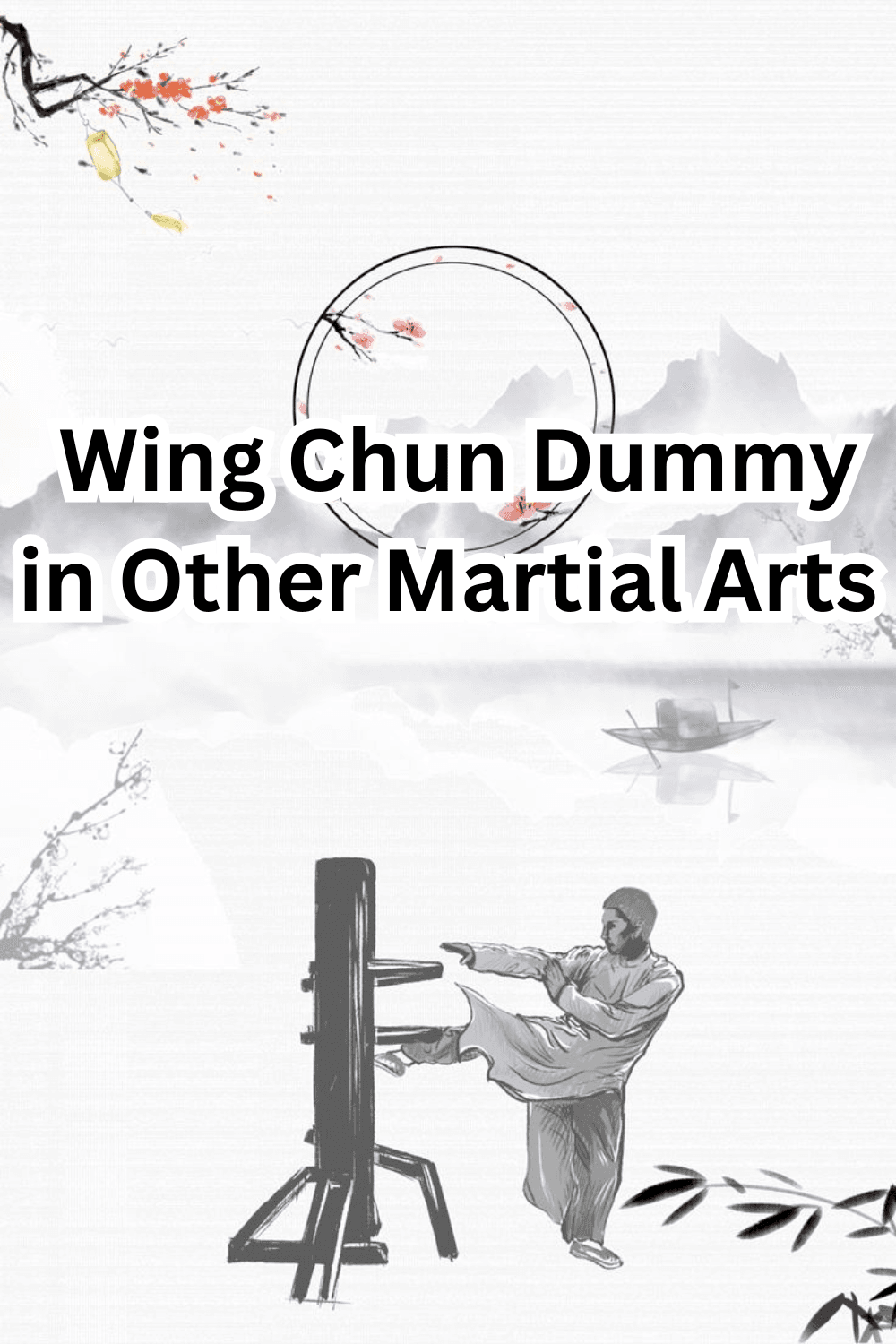Wing Tsun, a distinguished form of martial arts, finds its roots in Southern China.
It emerged during the late Qing Dynasty and is attributed to the legendary figures Ng Mui, a Shaolin nun, and her disciple Yim Wing Chun, after whom the art is named.
Wing Tsun is a subset of the broader Wing Chun system, renowned for its unique approach to self-defense and combat efficiency.
The principles of Wing Tsun emphasize economy of movement, directness, and practicality.
Unlike other martial arts, which may rely heavily on brute strength or acrobatic maneuvers, Wing Tsun focuses on leveraging body mechanics, sensitivity, and precise techniques to subdue an opponent.
A core tenet of Wing Tsun is the concept of “chi sau” or “sticky hands,” which trains practitioners to develop a tactile sensitivity to their opponent’s movements, allowing for swift and effective counteractions.
Key characteristics of Wing Tsun include simultaneous attack and defense, centerline theory, and close-range combat.
Practitioners are trained to strike along the centerline, the most direct path to an opponent’s vital areas.
By maintaining control of this line, they can efficiently neutralize threats while delivering powerful and targeted strikes.
Additionally, the martial art incorporates various forms, drills, and wooden dummy exercises to refine technique and build muscle memory.
Wing Tsun’s importance in the realm of self-defense cannot be overstated.
It equips individuals with practical skills to protect themselves in real-world scenarios, enhancing their situational awareness and reaction time.
Furthermore, the physical fitness benefits of Wing Tsun are considerable.
Regular practice improves cardiovascular health, strength, flexibility, and mental focus, contributing to overall well-being.
In essence, Wing Tsun is more than just a martial art; it is a holistic system that promotes physical fitness, mental discipline, and self-defense proficiency.
As we delve further into the topic, we will explore whether it is possible to learn Wing Tsun moves without the guidance of a teacher.
In the traditional practice of Wing Tsun, the role of a Sifu, or teacher, holds paramount importance.
A Sifu serves as more than just an instructor; they are custodians of the martial art’s rich heritage and subtle intricacies.
The benefits of learning Wing Tsun under the guidance of an experienced Sifu are manifold, beginning with personalized instruction.
In a structured learning environment, a teacher can tailor lessons to suit the student’s unique needs and progression level,
ensuring that foundational moves and advanced techniques are comprehended and executed correctly.
One of the critical aspects of Wing Tsun training is the correction of form.
Martial arts, particularly those as intricate as Wing Tsun, require precise execution of movements.
A Sifu observes and corrects a student’s form in real-time, providing immediate feedback that is essential for mastering techniques.
This personalized correction helps prevent the development of bad habits, which, if left unchecked, can lead to ineffective training and even injury.
Furthermore, a Sifu imparts the nuanced techniques that are often not easily understood through self-study or online tutorials.
These nuances include the subtle shifts in weight, the exact positioning of limbs, and the internal energy dynamics that are crucial for the effectiveness of Wing Tsun.
These elements are best learned through direct transmission from a skilled practitioner who can demonstrate and explain the subtleties in person.
Maintaining the integrity and effectiveness of Wing Tsun is another vital role of the teacher.
A Sifu ensures that the martial art is taught in its authentic form, preserving the principles and techniques passed down through generations.
This preservation is not only a matter of tradition but also of maintaining the martial art’s practical efficacy.
A well-trained Sifu can adapt the teaching methods to modern contexts while staying true to the core principles of Wing Tsun.
Advantages of Learning Wing Tsun on Your Own
Learning Wing Tsun independently offers several notable advantages.
One of the most significant is the flexibility in scheduling.
Without the constraints of a formal class timetable, you can practice whenever it suits you best.
This flexibility is particularly beneficial for those with irregular work hours or other commitments that make attending regular classes challenging.
Another advantage is the ability to progress at your own pace.
In a traditional class setting, the instructor may move on to new material before you feel completely comfortable with the current techniques.
Self-learning allows you to spend as much time as necessary on any given move, ensuring you achieve a thorough understanding before advancing.
This personalized approach can lead to a deeper and more comprehensive grasp of Wing Tsun principles.
Cost savings are also a considerable benefit of self-learning.
Martial arts classes can be expensive, with fees for instruction, equipment, and sometimes even uniforms.
By choosing to learn Wing Tsun on your own, you can bypass these costs.
Making the practice more accessible regardless of your financial situation.
Modern resources have made self-learning more feasible than ever before.
Instructional videos, books, and online courses provide valuable information and guidance for independent learners.
High-quality tutorials are available from reputable Wing Tsun practitioners, offering step-by-step instructions and demonstrations.
Additionally, online forums and communities can provide support, feedback, and motivation, further enriching the self-learning experience.
While the path of independent learning comes with its challenges,
These advantages demonstrate that with dedication and the right resources.
It is entirely possible to effectively learn Wing Tsun moves on your own.
Challenges and Limitations of Self-Teaching
Embarking on the journey of learning Wing Tsun moves by oneself can be fraught with several significant challenges and limitations.
One of the primary difficulties is the risk of developing bad habits.
Without the guidance of an experienced instructor, there is a substantial risk of practicing techniques incorrectly.
These incorrect methods can become ingrained over time, making them difficult to unlearn and correct.
A teacher provides the necessary corrections and adjustments to ensure that foundational techniques are learned correctly from the outset.
Another critical limitation is the lack of real-time feedback.
In a traditional learning environment, feedback is immediate and tailored to the individual’s performance.
This allows for instant correction and adjustment, which is crucial for mastering the precise movements and stances required in Wing Tsun.
Without this real-time feedback, it is challenging to gauge one’s progress accurately and make the necessary improvements.
Mastering complex techniques in Wing Tsun requires a deep understanding and practical application that is difficult to achieve in isolation.
Many of these advanced techniques involve subtle nuances that can only be effectively communicated and corrected through direct interaction with a knowledgeable instructor.
Furthermore, self-teaching often leads to misunderstandings of these complexities, which can hinder overall progress.
The importance of sparring and partner drills cannot be overstated in the practice of Wing Tsun.
These exercises are essential for developing timing, reflexes, and the ability to apply techniques dynamically against a resisting opponent.
Practicing alone limits the opportunity to engage in these critical drills.
thereby hampering the development of practical fighting skills.
Sparring with a partner provides invaluable experience in reading an opponent’s movements and adapting techniques in real-time, an aspect that solo practice simply cannot replicate.

Overall, while self-teaching Wing Tsun is not impossible, the absence of a teacher presents substantial challenges and limitations that can impede the effective learning and mastery of this martial art form.
Essential Resources for Self-Learning Wing Tsun
Aspiring practitioners who aim to learn Wing Tsun independently have a variety of resources at their disposal.
While having a teacher provides personalized guidance, several tools can assist in self-study effectively.
Books: Several comprehensive texts can provide foundational knowledge and detailed explanations of Wing Tsun techniques.

“Wing Chun Kung Fu: Traditional Chinese Kung Fu for Self-Defense and Health” by Ip Chun and Michael Tse is a highly recommended book that covers basic principles and forms.
Another valuable resource is “Wing Chun Compendium” by Wayne Belonoha, which delves into advanced concepts and applications.
Online Courses: Platforms like Udemy and Master Class offer structured Wing Tsun courses.
These courses are designed by experienced instructors and provide step-by-step tutorials.
For instance, the “Wing Chun Online” course by Grandmaster Chan includes comprehensive modules covering various levels of expertise.
Instructional Videos: Video content is crucial for visual learners.
YouTube channels such as “Sifu Fernandez Wing Chun” and “Wing Chun Illustrated” offer a wealth of free instructional videos.
These channels cover everything from basic stances to complex techniques, allowing learners to progress at their own pace.
Forums and Communities: Engaging with online forums and communities can provide support and advice from fellow practitioners.
Websites like “Wing Chun Online Community” and Reddit’s “wingchun” are excellent platforms to ask questions, share experiences, and gain insights from more experienced practitioners.
Training Tools: Investing in training tools like the Wing Tsun wooden dummy can significantly enhance practice.

The wooden dummy helps in refining techniques and building muscle memory.
Additionally, using mirrors during practice can help self-monitor and correct postures.
By leveraging these resources, one can create a structured and effective learning plan.
While self-learning requires dedication and discipline, the wealth of available materials makes it a feasible endeavor for those passionate about mastering Wing Tsun.
Creating a Structured Self-Training Plan
Embarking on the journey of self-learning Wing Tsun requires a well-structured training plan.
A comprehensive plan ensures that you cover all necessary aspects of the martial art, even without the guidance of a teacher.
The first step is setting realistic goals. Assess your current skill level and determine what you aim to achieve over a specified period.
Break down your long-term goals into smaller, manageable milestones to maintain motivation and track progress effectively.
Creating a balanced training schedule is crucial for holistic development.
Allocate time for various forms of practice such as shadowboxing, forms, and conditioning exercises.
Shadowboxing allows you to practice movements and techniques without a partner, focusing on precision and fluidity.
Dedicate certain days to practicing forms, which are sequences of movements that help in mastering the basics and improving muscle memory.
Conditioning exercises should not be overlooked as they enhance physical fitness, which is vital for executing Wing Tsun techniques efficiently.
Incorporate different training modalities to keep the practice engaging and comprehensive.
Utilize online resources, such as instructional videos and tutorials, to supplement your learning.
These resources can provide visual and verbal cues that mimic the guidance of a teacher.
Additionally, consider joining online forums or social media groups where you can discuss techniques and get feedback from fellow practitioners.
Regular self-assessment is a key component of a structured training plan.
Periodically evaluate your progress and adjust the plan as needed.
This might involve increasing the intensity of conditioning exercises, refining techniques in forms, or adding new elements to your shadowboxing routine.
Consistency in practice is paramount, so ensure that your training schedule is realistic and sustainable in the long term.

By adhering to a structured self-training plan, you can make significant strides in learning Wing Tsun on your own.
Remember to stay disciplined, seek out resources, and continuously evaluate your progress to achieve your martial arts goals.
Supplementing Self-Training with Group Classes and Workshops
While self-training in Wing Tsun can be a constructive way to build foundational skills and discipline, supplementing this practice with group classes, seminars, or workshops can offer significant advantages.
Engaging in these structured learning environments provides an opportunity to receive valuable feedback from experienced instructors.
This feedback is crucial for correcting any technical inaccuracies that may develop during solo practice, ensuring that the learner’s techniques are both effective and safe.
Group classes and workshops also present the opportunity to gain new insights into Wing Tsun.
Instructors often introduce advanced concepts, nuanced techniques, and varied training methodologies that might be difficult to grasp through self-study alone.
These sessions can expand a practitioner’s understanding of the art and expose them to different perspectives and strategies.
Additionally, observing and interacting with fellow students can foster a more profound understanding of the principles and applications of Wing Tsun.
Another critical benefit of participating in group sessions is the chance to practice with partners.
Wing Tsun is a martial art that relies heavily on understanding and responding to an opponent’s movements.
Practicing with partners allows for the development of attributes such as timing, sensitivity, and adaptability.

These elements are challenging to cultivate in isolation.
Through drills, sparring, and cooperative exercises, learners can enhance their ability to apply techniques in dynamic, real-world scenarios.
Moreover, the collective atmosphere of group classes and workshops can be highly motivating.
The camaraderie and shared goal of mastering Wing Tsun can inspire individuals to push their limits and stay committed to their training regimen.
This sense of community also opens the door to networking opportunities,
creating a support system that can offer camaraderie, advice, and encouragement.
Incorporating group classes and workshops into a self-training regimen not only enriches the learning experience.
but also ensures a more well-rounded and practical understanding of Wing Tsun.
Balancing solo practice with these interactive learning opportunities can significantly accelerate progress and enhance skill proficiency.
Conclusion: Finding the Right Balance
In the journey of learning Wing Tsun, the aspiration to self-learn is both commendable and practical given the accessibility of various resources.
However, it is essential to recognize the inherent limitations of self-teaching, particularly in a discipline that relies so heavily on technique precision, real-time feedback, and partner interaction.
Self-learning offers flexibility and convenience, allowing individuals to progress at their own pace.
With a plethora of online tutorials, instructional videos, and written guides readily available, aspiring Wing Tsun practitioners have a wealth of information at their fingertips.
These resources can serve as valuable tools for understanding the fundamental concepts, basic stances, and introductory moves.
However, the effectiveness of self-learning Wing Tsun is depends on personal guidance.
A teacher’s expertise is crucial in correcting form, preventing bad habits,.
and providing nuanced insights that are difficult to glean from self-study alone.
The nature of Wing Tsun, with its emphasis on sensitivity and adaptability is offering through direct interaction with an expert instructor and fellow students.
To achieve a balanced approach, it is advisable to combine self-study with formal instruction whenever possible.
Engaging in regular classes or occasional workshops can significantly enhance one’s understanding and execution of Wing Tsun techniques.
These structured settings provide invaluable opportunities for feedback, sparring practice.
And deeper immersion into the martial art’s philosophy and application.
Ultimately, the path to mastering Wing Tsun is a personal one.
Influenced by individual goals, available resources, and commitment.
Whether through self-study, traditional classes, or a blend of both.
finding a harmonious balance will enable learners to progress effectively while maintaining the integrity and authenticity of Wing Tsun.
By thoughtfully integrating various learning methods, enthusiasts can navigate their journey with confidence and skill.




